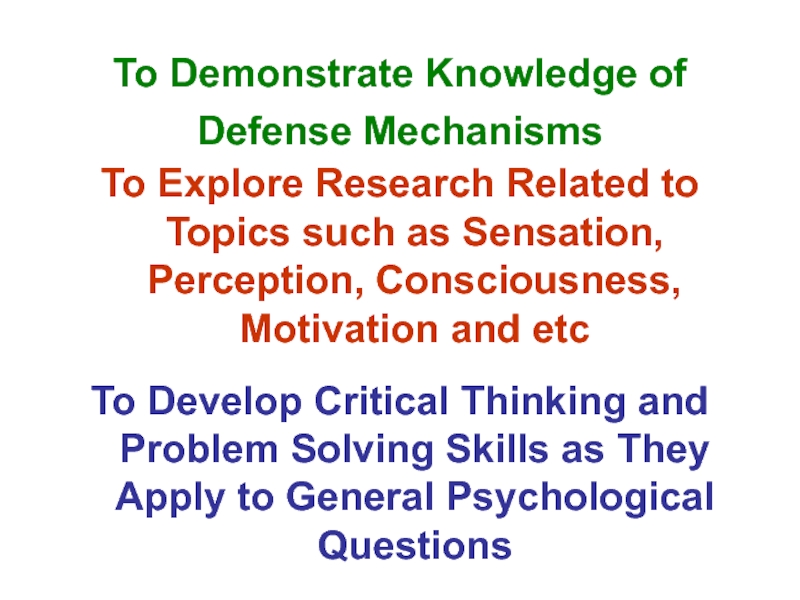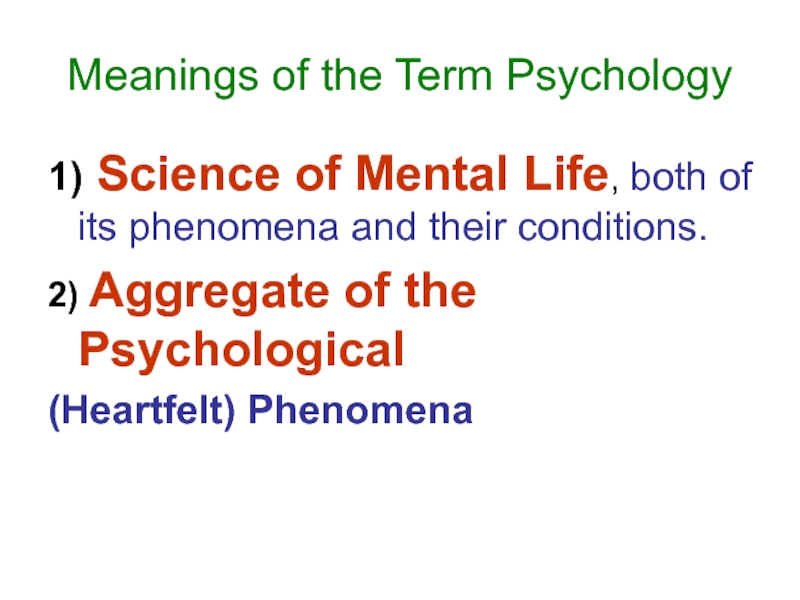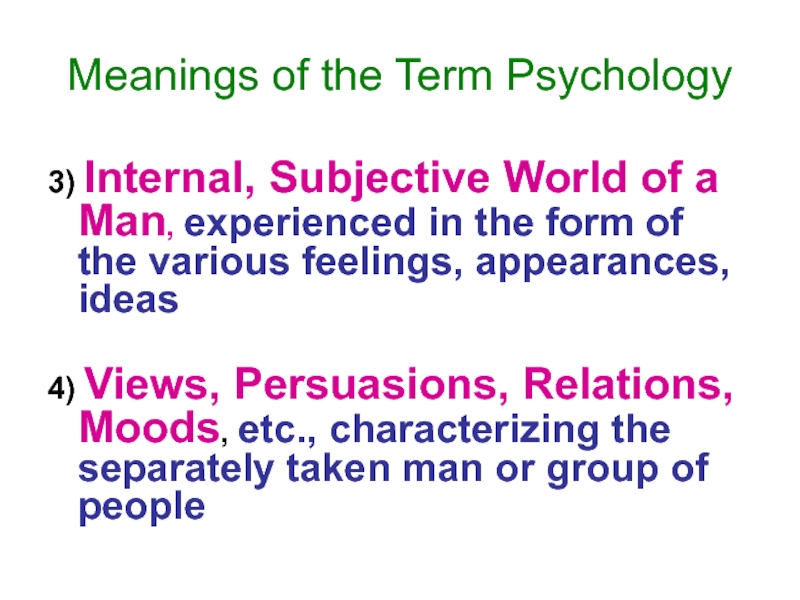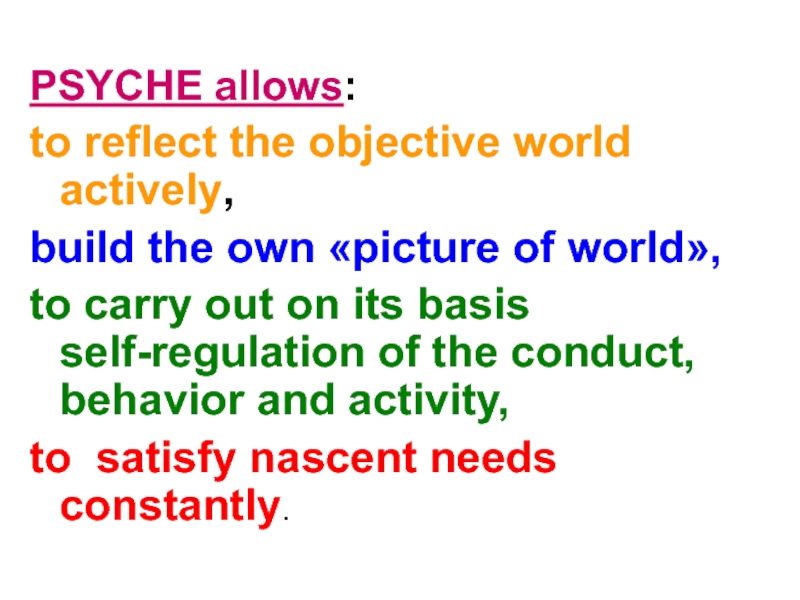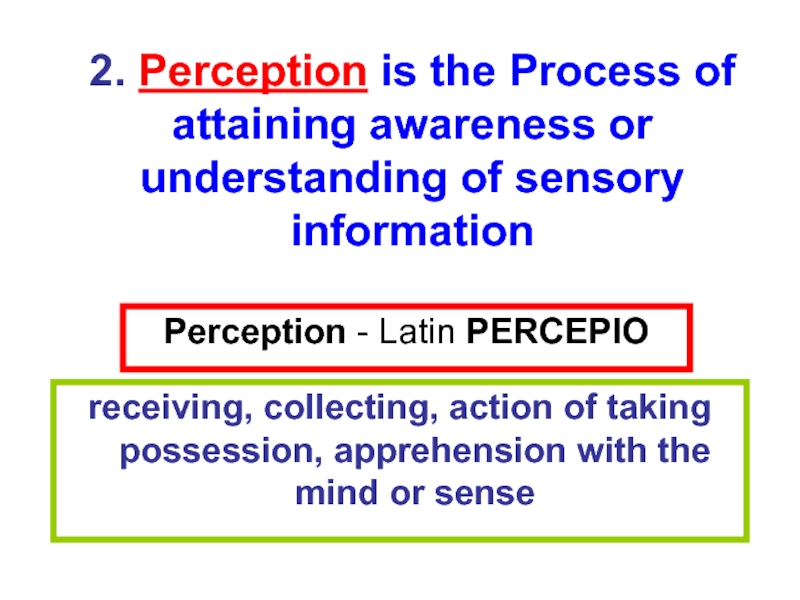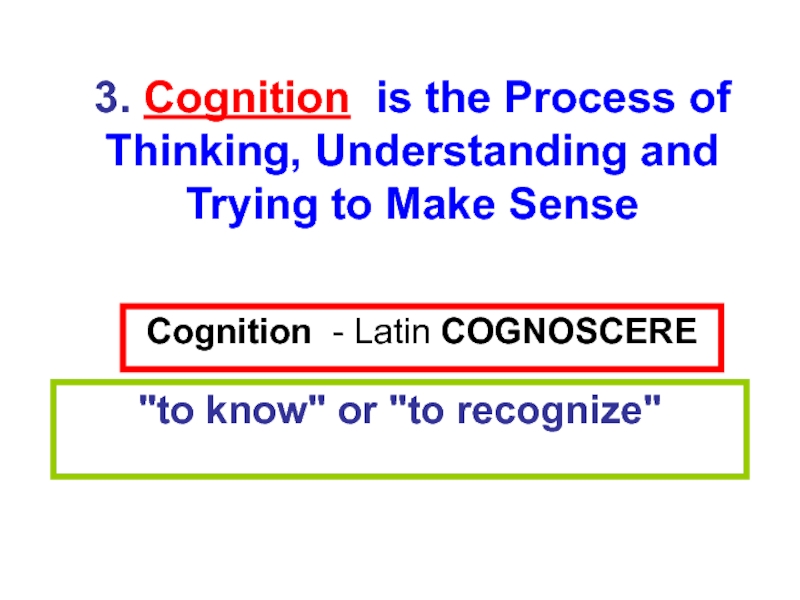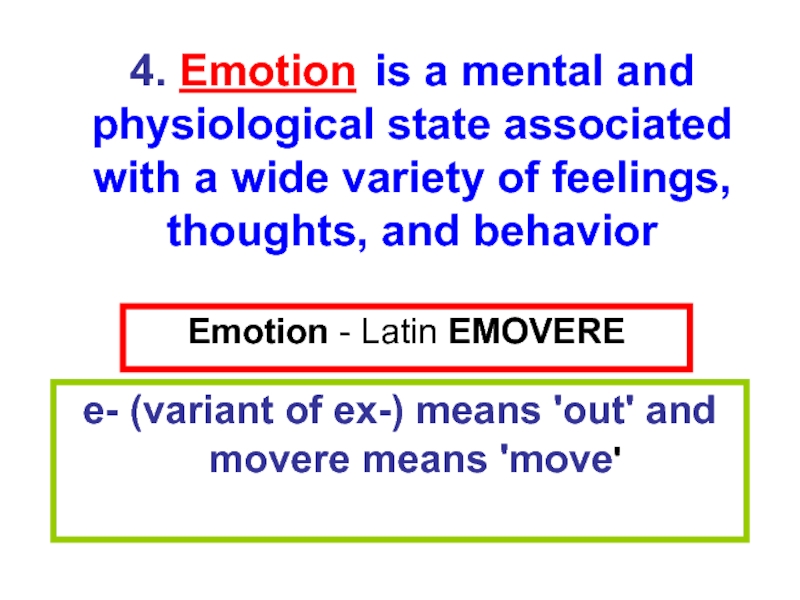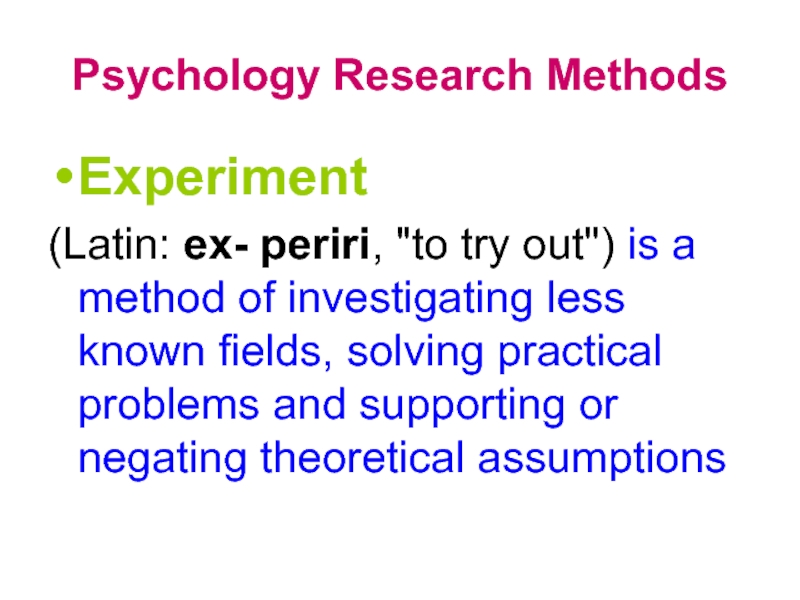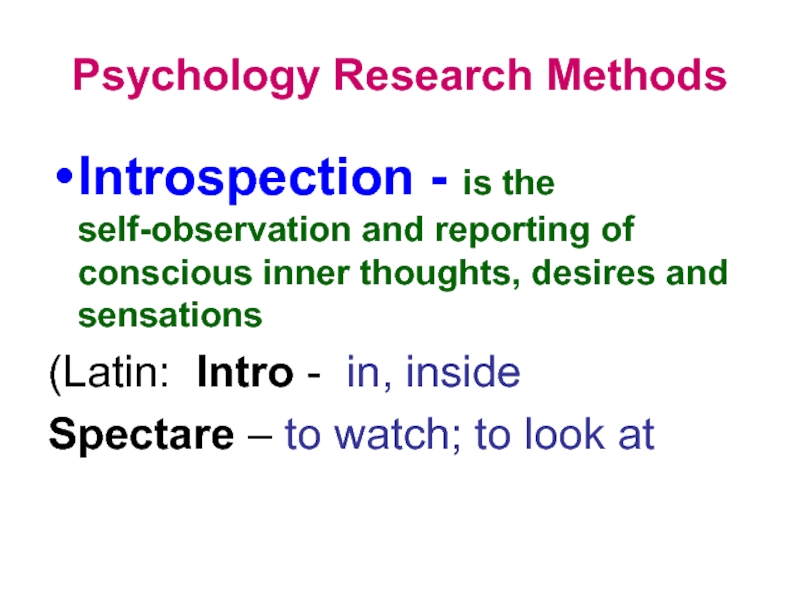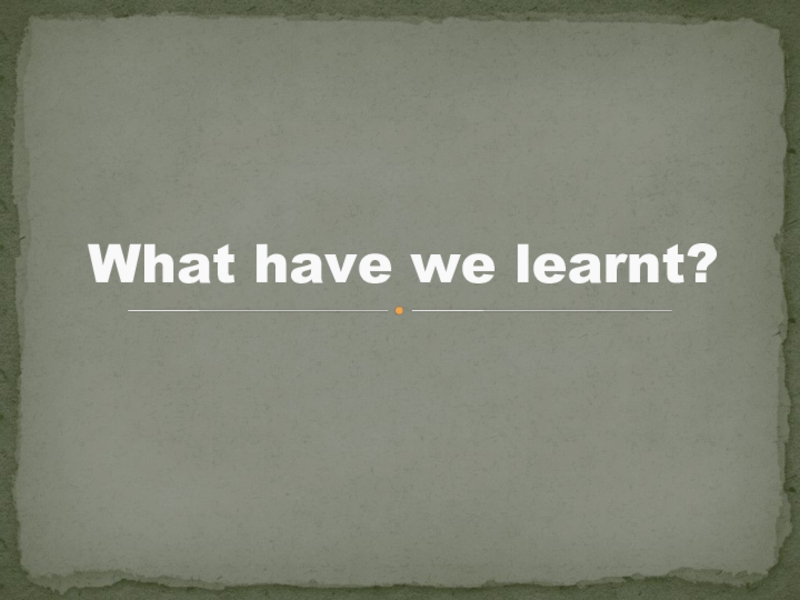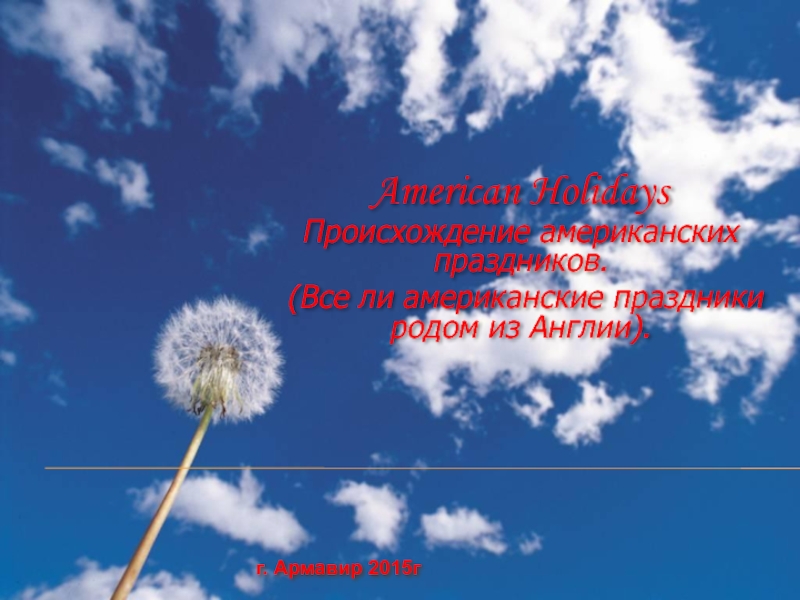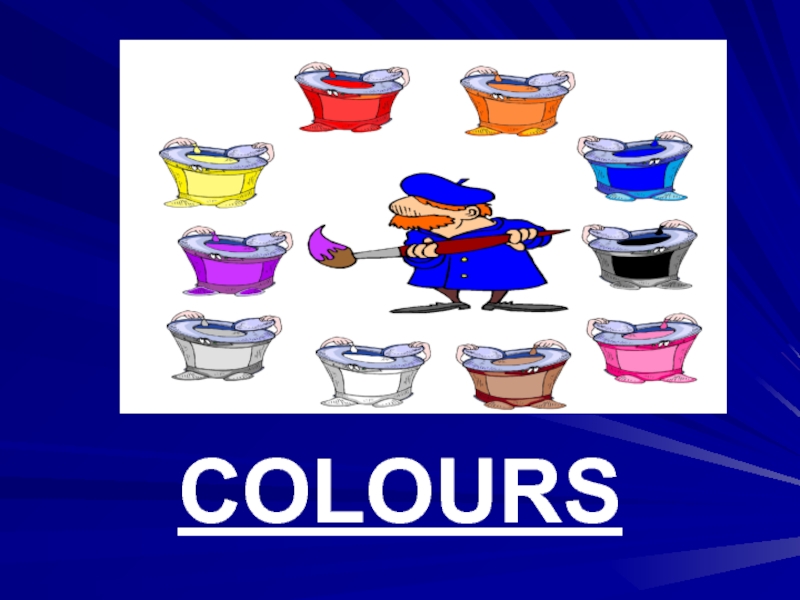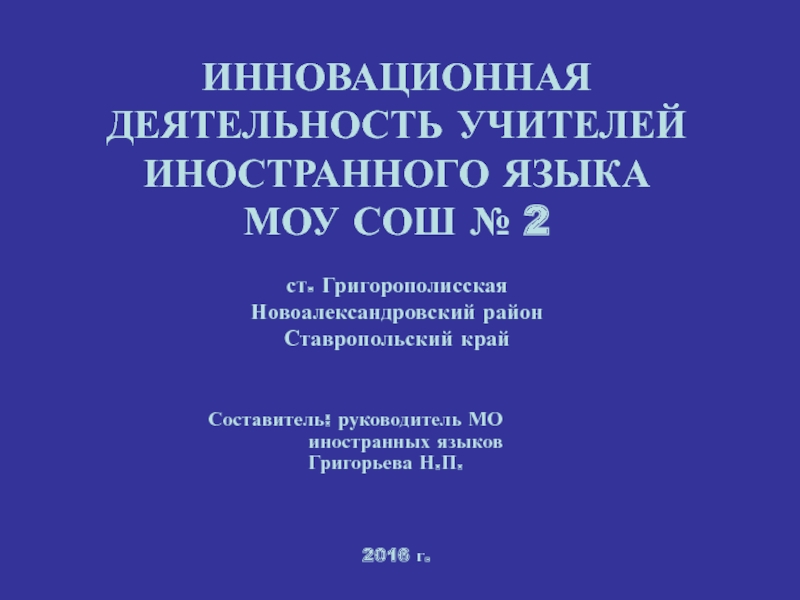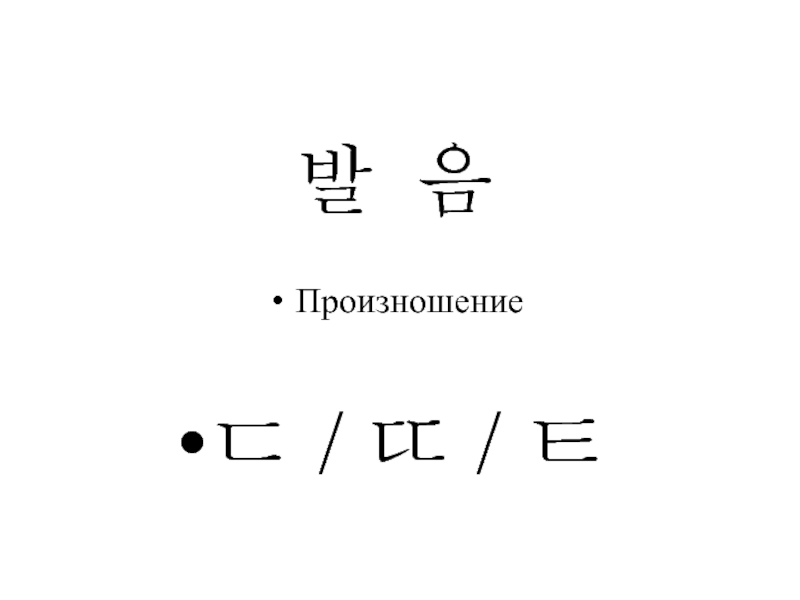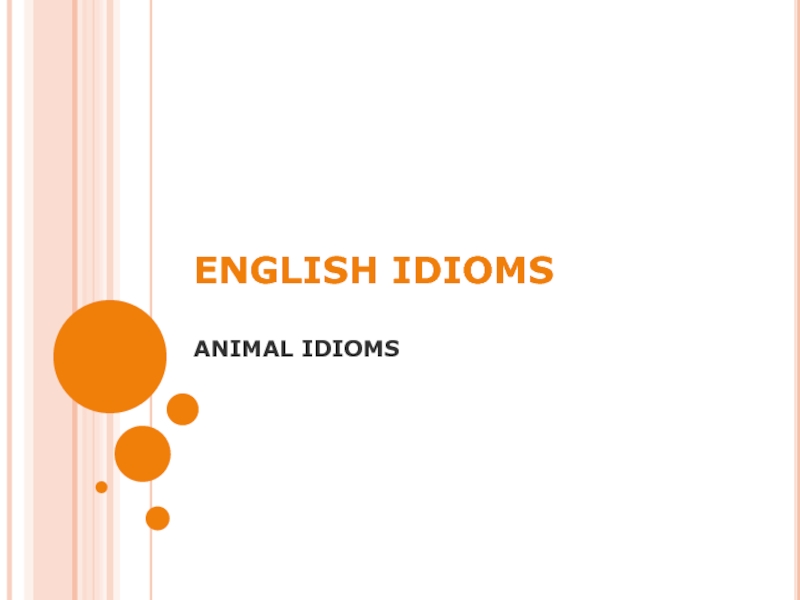Разделы презентаций
- Разное
- Английский язык
- Астрономия
- Алгебра
- Биология
- География
- Геометрия
- Детские презентации
- Информатика
- История
- Литература
- Математика
- Медицина
- Менеджмент
- Музыка
- МХК
- Немецкий язык
- ОБЖ
- Обществознание
- Окружающий мир
- Педагогика
- Русский язык
- Технология
- Физика
- Философия
- Химия
- Шаблоны, картинки для презентаций
- Экология
- Экономика
- Юриспруденция
Psychology
Содержание
- 1. Psychology
- 2. Main Skills And KnowledgeTo Know The Basics
- 3. To Understand the Process by Which Scientific
- 4. To Demonstrate Knowledge of Defense Mechanisms To
- 5. THE SUBJECT AREAS General Psychology: Introduction Biological
- 6. PSYCHE LOGOS PSYCHOLOGY SOUL Word, StudyKnowledge
- 7. Meanings of the Term Psychology1) Science of
- 8. 3) Internal, Subjective World of a Man,
- 9. BASIC TERMS1. Psyche is a system property
- 10. PSYCHE allows:to reflect the objective world actively,build
- 11. Perception - Latin PERCEPIOreceiving, collecting, action of
- 12. Cognition - Latin COGNOSCERE "to know" or
- 13. Emotion - Latin EMOVERE e- (variant of
- 14. Personality - Latin persona mask 5. Personality
- 15. 6. Behavior refers to the actions
- 16. 7. Interpersonal Relationship is a relatively long-term
- 17. Psychology Research MethodsExperiment (Latin: ex- periri, "to
- 18. Types of ExperimentsNatural experiments (also called quasi-experiments)Controlled experimentsField experimentsLaboratory experiments
- 19. Psychology Research MethodsIntrospection - is the self-observation
- 20. Psychology Research MethodsExtrospection - the observation of
- 21. HOME TASKDraw the scheme of psychology sub-fields
- 22. Скачать презентанцию
Main Skills And KnowledgeTo Know The Basics Of Major Topics, Theorists, Principles And Vocabulary Of Psychology To Discuss Historical And Philosophical Foundations Of Psychology
Слайды и текст этой презентации
Слайд 1PSYCHOLOGY
General Psychology
Associate professor
Kateryna Naumik
Екатерина Георгиевна Наумик
Слайд 2Main Skills And Knowledge
To Know The Basics Of Major Topics,
Theorists, Principles And Vocabulary Of Psychology
Philosophical Foundations Of Psychology Слайд 3To Understand the Process by Which Scientific Research in Psychology
is Conducted
To Evaluate Human Behavior and Mental Processes
To
Describe Theories of Social Human Behavior Слайд 4To Demonstrate Knowledge of Defense Mechanisms
To Explore Research Related
to Topics such as Sensation, Perception, Consciousness, Motivation and etc
To Develop Critical Thinking and Problem Solving Skills as They Apply to General Psychological Questions
Слайд 5THE SUBJECT AREAS
General Psychology: Introduction
Biological & Cognitive Psychology
Personality Psychology: Personality Traits
Needs, Motives and Behavior
Developmental Psychology
“Self-concept” & Defense Mechanisms
Social Psychology: Interpersonal Relationships & Group Dynamics
Personality & Activity
Слайд 7Meanings of the Term Psychology
1) Science of Mental Life, both
of its phenomena and their conditions.
2) Aggregate of the Psychological
(Heartfelt) Phenomena
Слайд 83) Internal, Subjective World of a Man, experienced in the
form of the various feelings, appearances, ideas
4) Views, Persuasions,
Relations, Moods, etc., characterizing the separately taken man or group of people Meanings of the Term Psychology
Слайд 9BASIC TERMS
1. Psyche is a system property of the high-organized
matter, consisting of:
the active reflection of objective world by
the person, the construction of corresponding inalienable “picture of the world” and self-regulation of his/her activity
Слайд 10PSYCHE allows:
to reflect the objective world actively,
build the own «picture
of world»,
to carry out on its basis self-regulation of
the conduct, behavior and activity, to satisfy nascent needs constantly.
Слайд 11Perception - Latin PERCEPIO
receiving, collecting, action of taking possession, apprehension
with the mind or sense
2. Perception is the
Process of attaining awareness or understanding of sensory information Слайд 12Cognition - Latin COGNOSCERE
"to know" or "to recognize"
3.
Cognition is the Process of Thinking, Understanding and Trying to
Make SenseСлайд 13Emotion - Latin EMOVERE
e- (variant of ex-) means 'out'
and movere means 'move'
4. Emotion is a mental and
physiological state associated with a wide variety of feelings, thoughts, and behavior Слайд 14Personality - Latin persona
mask
5. Personality is a
dynamic and organized set of characteristics possessed by a person
that influences uniquely on his/her cognitions, motivations, and behaviors in various situationsСлайд 156. Behavior refers to the actions or reactions of
an object or organism, usually in relation to the environment
Behavior can be conscious or unconscious, overt or covert, and voluntary or involuntary
Слайд 167. Interpersonal Relationship is a relatively long-term association between two
or more people.
This association may be based on emotions
like love and liking, regular business interactions, or some other type of social commitment Слайд 17Psychology Research Methods
Experiment
(Latin: ex- periri, "to try out") is
a method of investigating less known fields, solving practical problems
and supporting or negating theoretical assumptionsСлайд 18Types of Experiments
Natural experiments (also called quasi-experiments)
Controlled experiments
Field experiments
Laboratory experiments
Слайд 19Psychology Research Methods
Introspection - is the self-observation and reporting of
conscious inner thoughts, desires and sensations
(Latin: Intro - in, inside
Spectare – to watch; to look at
Слайд 20Psychology Research Methods
Extrospection - the observation of things external to
one's self.
Introspection may be used synonymously with self-reflection and
used in a similar way. Слайд 21HOME TASK
Draw the scheme of psychology
sub-fields interrelation
Imagine and produce
image of psyche
(to picture it as collage or drawing,
illustration) Make a description of it
on ½ or 1 sheet of paper



